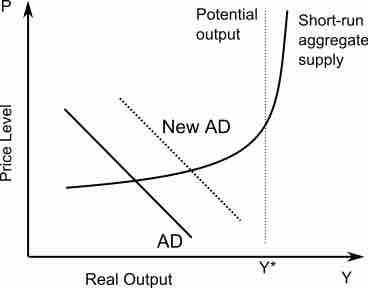Aggregate demand (AD) is the total demand for final goods and services in the economy at a given time and price level. It is the combination of consumer spending, investments, government spending, and net exports within a given economic system (often written out as AD = C + I + G + nX). As a result of this, increases in overall capital within an economy impacts the aggregate spending and/or investment. This creates a relationship between monetary policy and aggregate demand.
This brings us to the aggregate demand curve. It specifies the amounts of goods and services that will be purchased at all possible price levels. This is the demand for the gross domestic product of a country. It is also referred to as the effective demand.
The aggregate demand curve illustrates the relationship between two factors - the quantity of output that is demanded and the aggregated price level. Another way of defining aggregate demand is as the sum of consumer spending, government spending, investment, and net exports. The aggregate demand curve assumes that money supply is fixed. Altering the money supply impacts where the aggregate demand curve is plotted.
Contractionary Monetary Policy
Contractionary monetary policy decreases the money supply in an economy . The decrease in the money supply is mirrored by an equal decrease in the nominal output, otherwise known as Gross Domestic Product (GDP). In addition, the decrease in the money supply will lead to a decrease in consumer spending. This decrease will shift the aggregate demand curve to the left. This reduction in money supply reduces price levels and real output, as there is less capital available in the economic system.

Aggregate Demand Graph
This graph shows the effect of expansionary monetary policy, which shifts aggregate demand (AD) to the right.
Expansionary Monetary Policy
Expansionary monetary policy increases the money supply in an economy. The increase in the money supply is mirrored by an equal increase in nominal output, or Gross Domestic Product (GDP). In addition, the increase in the money supply will lead to an increase in consumer spending. This increase will shift the aggregate demand curve to the right.
In addition, the increase in money supply would lead to movement up along the aggregate supply curve. This would lead to a higher prices and more potential real output.